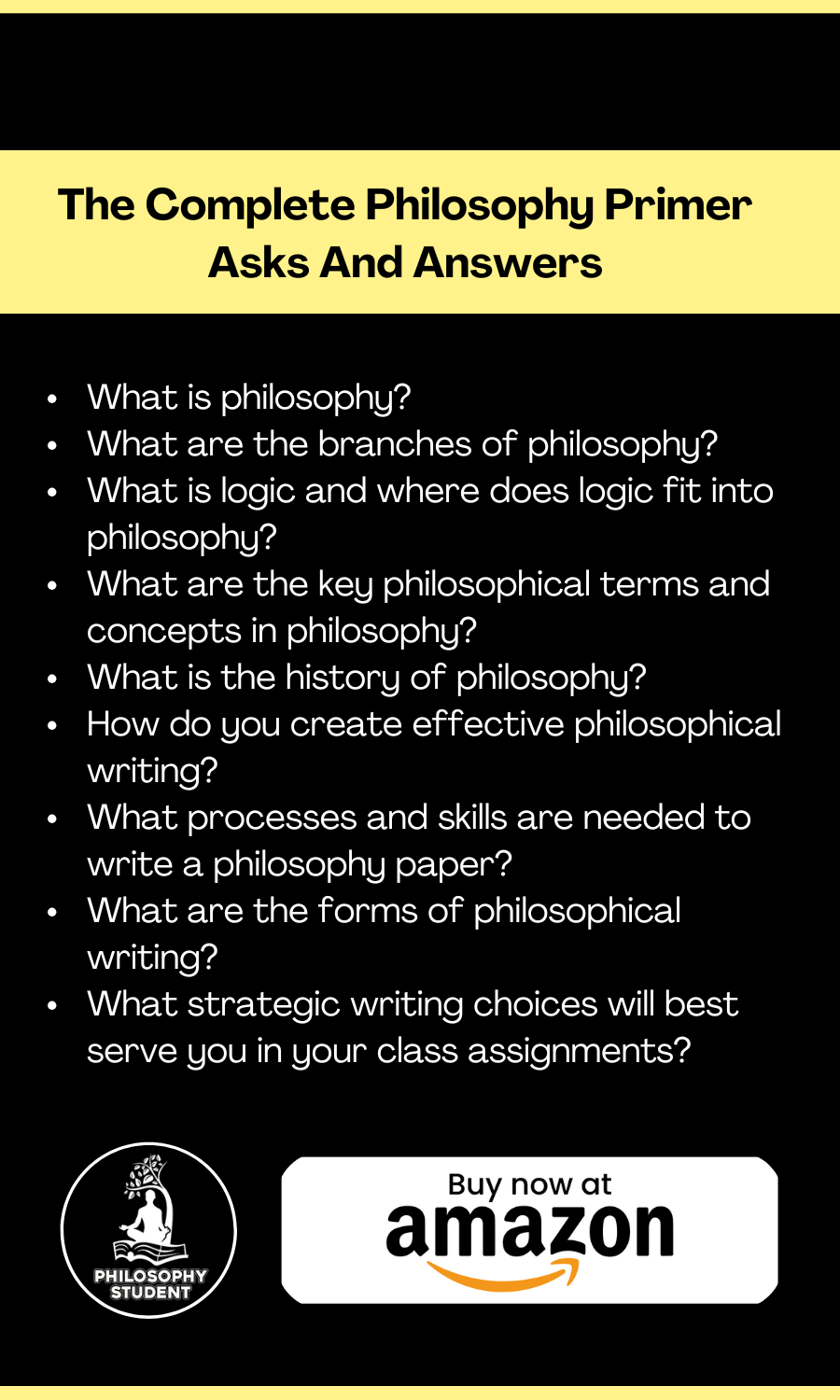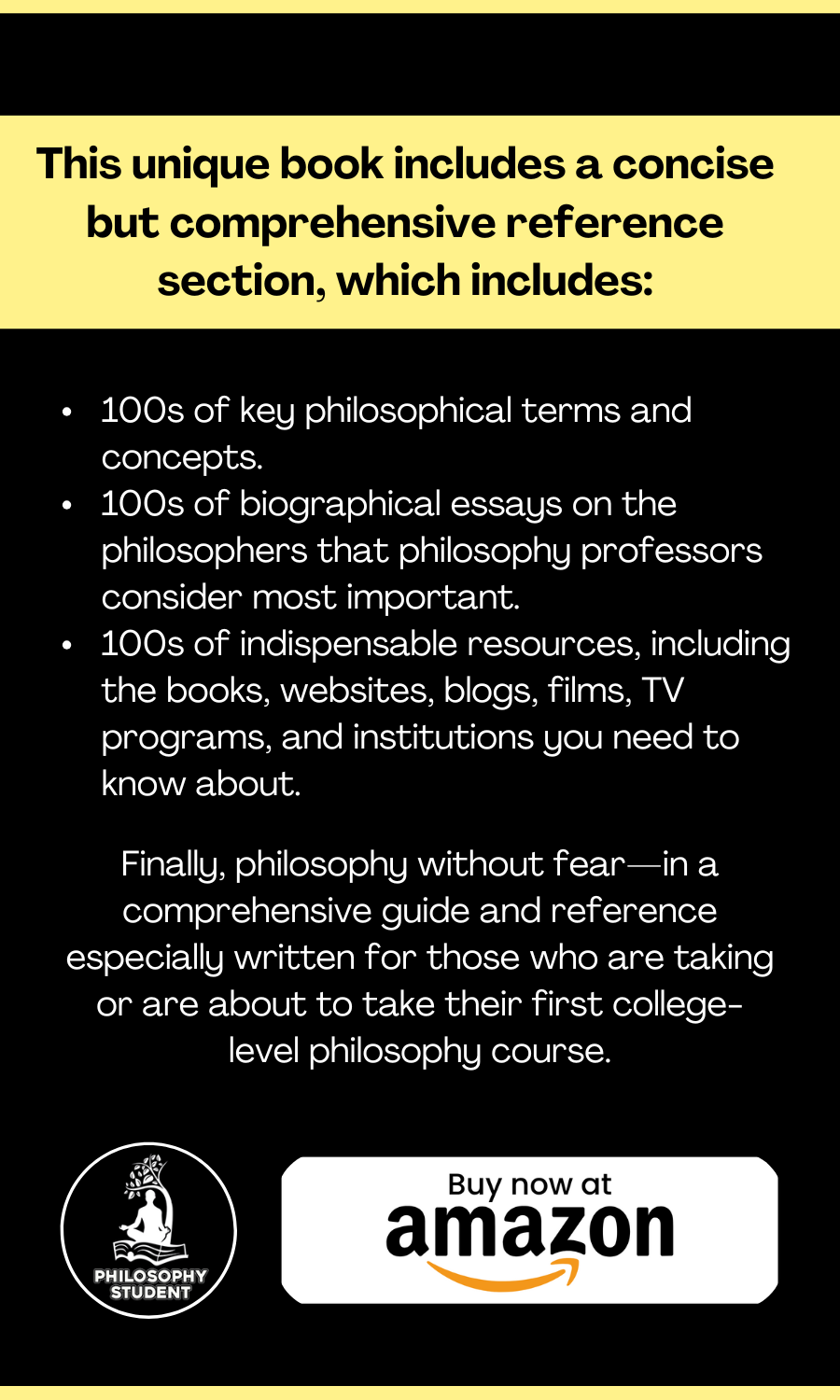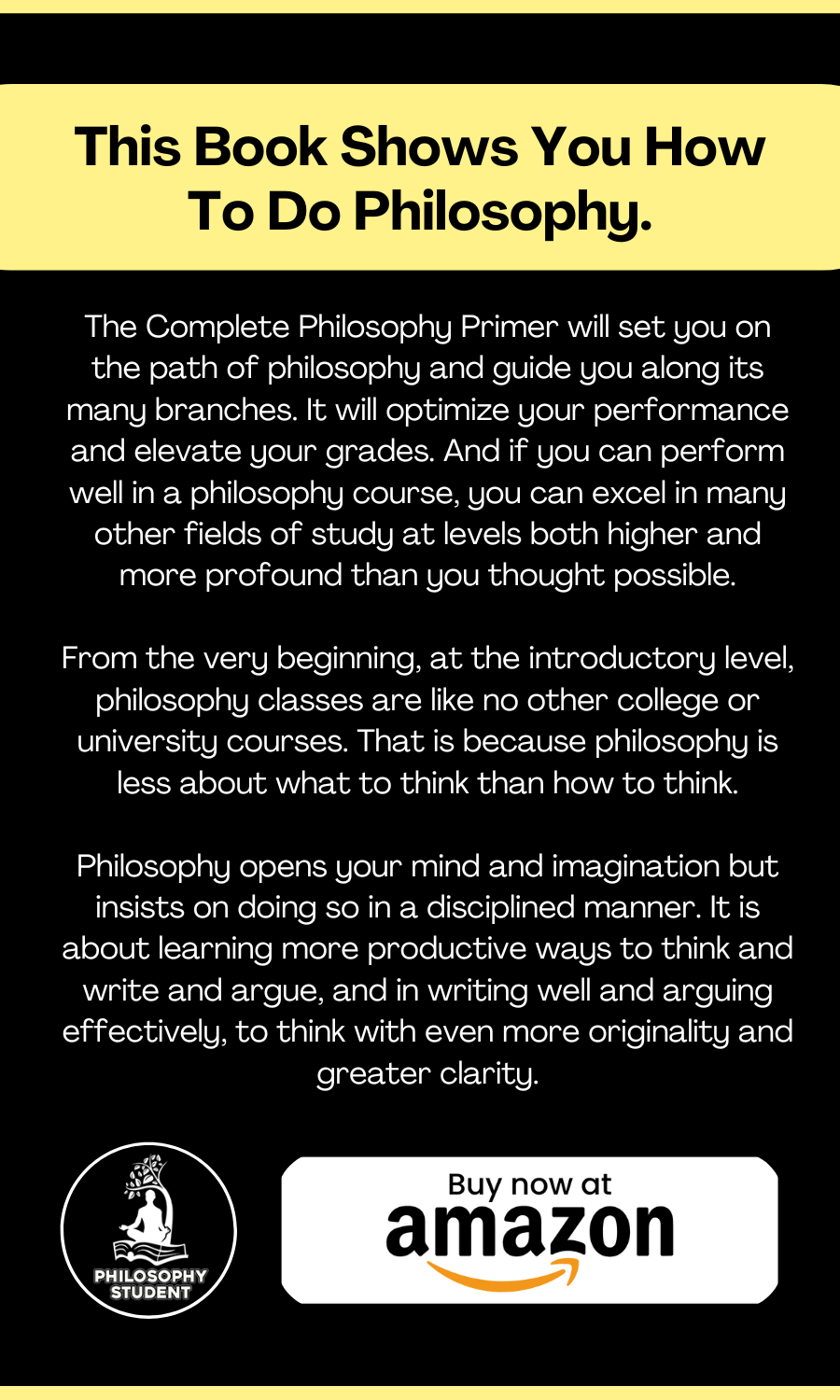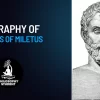Having just walked through the basic process of writing a philosophy paper, we turn now to the essential skillset you should develop and apply not only to the writing of papers for philosophy class but to the disciplined study of philosophy itself
Defining Concepts
An important skill in philosophical writing is defining key concepts. You can look up words in the dictionary, and that is an essential start and a good one, as far as it goes. But, in philosophy class, the professor is usually looking for analytical definitions of key terms. Such definitions are intended to show how a term is used in philosophy, not in general discourse. If a key term can be understood as philosophers or as a specific philosopher uses it, the underlying thought can be explored more meaningfully.
Analytical definition is a common writing exercise in philosophy classes. Typically, the focus is on creating a definition that accomplishes two objectives. It tells what features are common to all things of a certain class, and it tells what features are unique to the class in question. A definition that can accomplish both objectives is the kind of precise definition philosophers find most useful.
If you are asked to analytically define automobile, for instance, you will probably want to define the word within its class (the class of vehicles? the class of things that move under their own power?) in terms of what automobiles have in common with all members of the class and what makes them unique within the class. If you define automobile too broadly, you may end up including trucks, tanks, SUVs, and motorcycles in your definition, which is almost certainly too diffuse a definition. On the other hand, if you define automobile too narrowly, you may end up excluding certain types of cars.
The method by which philosophers define a term so that it is neither too broad nor too narrow with respect to its class is one that ensures the definition satisfies both necessary and sufficient conditions. A necessary condition is one without which a given thing cannot be what it is. You may decide, for instance, that self-powered movement is a necessary condition for a thing to be called an automobile. But there are many things, including animals, that are capable of self-powered movement. For this reason, this aspect of the definition may be necessary, but it is not sufficient. A sufficient condition specifies one way of being a given thing. A sufficient definition of an automobile might extend the necessary definition into something like this: An automobile is a self-powered motor-driven vehicle with four tires, used mainly to transport one to eight people (not cargo) primarily on roads.
Doubtless, any competent philosophy student would find fault with this definition and offer something even more rigorous in terms of the two dimensions, necessity and sufficiency. What this tells us is that writing an analytical definition is a challenging project. Indeed, many philosophers insist that only formal logic and mathematics or perhaps physics and chemistry have reliably developed fully satisfactory analytical definitions. So, why should mere philosophers, laboring in language, even try? The answer is that the act of definition gets to the very heart of philosophy, which is about questioning ordinary things, the nature of the world around us and ourselves within the world, experiencing that world, perceiving it, thinking about it, and generally processing it.
Formulating A Philosophical Problem
Writing assignments generally fall into two categories, argumentative and expository. Argumentative assignments require taking a position on some controversial question, problem, or issue in anything from politics to ethics to aesthetics or within the discipline of philosophy itself. Such assignments are common in philosophy courses at every level.
Expository assignments are explanatory and descriptive. For instance, the assignment “Identify and discuss three of G. W. F. Hegel’s key concepts in the creation of German idealism” can be completed chiefly by doing the relevant research on Hegel, German idealism, and absolute idealism. Yet, in the discipline of philosophy, even such expository assignments typically require an element of argument. For instance: Why did you choose A, B, and C as more “key” than D, E, and F? Defend and justify. And presumably you will want to rate Hegel’s contribution to German idealism, so there is another judgment you will need to justify. Finally, while you can rely heavily on your research in the history of philosophy to
define “German idealism,” you may exercise some of your own judgment in writing about how it differs from idealism (such as that of Plato) prior to Hegel. Again, this will require sound argument.
In short, whatever your writing assignment, you can usually count on argument or problem-solving as being central to it if for no other reason than that problem solving is the essence of philosophy.
To create your essay’s argument, its approach to its topic, you must first identify a philosophical problem. Sometimes your instructor will make this easy by asking a specific question you must answer. The question is thus the philosophical problem at the core of your paper. But it is also quite possible that you will be turned loose to identify a problem.
In general, a philosophical problem worth writing about may be defined as a question that is not easily answered. Classic questions abound: “Is there a God?” “What is reality?” “Do people have free will?” “Are mind and body separate?” “Is moral relativism truly moral?” And so on. They are all fascinating questions. The trouble is that questions such as these take at least a lifetime to answer persuasively, and you have a semester or less.
You will need to identify a problem narrow enough to be adequately discussed in a paper that may be 500, 1000, 2500, 5000, words or, if it is a term paper, perhaps somewhat longer. You have limited time and space to treat the problem. Yet if you choose a problem too narrow, you will have a difficult time writing anything significant about it.
You can productively narrow down philosophical problems in at least four ways: Take a question, such as Is there free will?, discuss the views of two contrasting philosophers on the question (say, the eighteenth-century American theologian Jonathan Edwards and the nineteenth-century American philosopher Ralph Waldo Emerson), and present an argument supporting one position over the other. In such a
paper, you would briefly lay out the problem, present Edwards’s and Emerson’s solutions to the problem (with relevant examples), and then present an argument for which philosopher’s solution is stronger.
Find a relatively narrow, focused aspect of a larger problem. For instance, instead of tackling the great question of subject versus object—How do I know that what I perceive is real?—you might argue that Hegel succeeded in supplying a workable answer by resolving the subject/object dualism with his concept of absolute idealism. Apply a philosophical solution to a practical problem. Instead of tackling the massive yet amorphous question Is it ever ethical to lie? ask, Can diplomacy be practiced without secrecy?
Slice that question—Is it ever ethical to lie?—even thinner: How would Kant, as the author of Critique of Pure Reason, respond to the question, Can diplomacy be practiced without secrecy?
However you approach identifying a problem for philosophical discussion, avoid the extremes: problems that are simply too large to discuss in a half-dozen pages; problems that are by any reasonable measure unimportant (“Why is the water always colder from the bathroom faucet?”); problems that are too broad to be treated meaningfully in a paper of modest length; problems that are too narrow to generate interest in most readers; problems that are easily solved and therefore not worth writing about; and problems that are intractable and cannot be reasonably answered. Instead, work the fertile middle ground with a problem that is both interesting and important to you—because, chances are, if you find the problem
genuinely interesting, others will as well. Focus narrowly enough to create a thorough discussion that gets beneath the surface. Find something with demonstrable difficulties that require thought and skill to solve. Writing about easy problems with obvious answers is like playing tennis without a net.
One last point about identifying a problem. Robert Browning famously agued in his poem “Andrea del Sarto”: “A man’s reach should exceed his grasp, / Or what’s a heaven for?” Suppose you set out in a paper to solve some problem that simply eludes a persuasive answer. Should you throw the paper away and look for something more manageable? Perhaps. But perhaps there is a better way. Consider making the subject of your paper the difficulties of solving the problem you have posed for yourself. You may even argue that the problem is unsolvable and provide persuasive reasons for that conclusion.
Anatomy Of An Argument
Knowing how to analyze an argument will help you in two ways. First, early assignments in many philosophy courses ask you to analyze arguments that are presented in textbooks or in class. Second, analyzing arguments—reverse-engineering them, as it were—is one of the best ways to learn how to construct a persuasive argument.
Argument Form
We know that reasoning comes in two flavors, deductive and inductive. Arguments derive from these forms of reasoning.
A deductive argument assumes that the major and minor premises offered are true and therefore support the conclusion: All men are mortal (major premise); Socrates is a man (minor premise); Therefore, Socrates is mortal (conclusion). Since the premises are assumed to be true, the only dimension of the deductive argument that is subject to analysis is its mechanics. All men are mortal; Socrates is an aardvark; Therefore, Socrates is not mortal. Factually, the minor premise is clearly false, but if we are only analyzing the mechanism of the argument, we don’t comment on this. For the question at issue is not whether the
conclusion of the argument is true or false, but whether it is valid or invalid. In this case, the conclusion, Socrates is not mortal, happens to be false. But that is rather beside the point in a deductive argument. The point is that the conclusion is invalid because the two premises, All men are mortal and Socrates is an aardvark, do not logically support the conclusion that Socrates is not mortal. Neither do they refute that conclusion. They are simply logically irrelevant to the conclusion. Indeed, from the two premises, it is impossible to reach a logically valid conclusion.
In some imaginary universe, it might be possible to do all reasoning in arguments that
proceed from premises absolutely known to be true. Thus, all conclusions would be drawn
deductively. Get the logical mechanics right, and you would infallibly have your answer.
However, we do not live in such a universe, and, usually, each premise requires a data-based
or experientially based argument on its behalf. So, while the ability to identify flawed
deductive reasoning is essential, inductive argument is found far more often than deductive
argument, not just in philosophy but in everyday life.
In our world, the premises of an argument are rarely so self-evident that they can be assumed true. Frank has white hair. Frank is older than sixty. Therefore, everyone over sixty has white hair. Let us say that both the major and minor premises are factually true. Nevertheless, the conclusion is both invalid and false. It does not follow deductively from the premises, nor can it be supported by diligent inductive methods based on experience and observation.
In a two-premise deductive argument, validity or invalidity is independent of the factual truth of the premises. Thus:
PREMISES CONCLUSION ARGUMENT
True True Valid
True True Invalid
False False Valid
False False Invalid
False True Valid
False False Invalid
True False Invalid
Refutation
To refute a deductive argument, you have two choices. You can refute it deductively, showing that its mechanics are wrong: Frank has white hair. Frank is older than seventy. Therefore, everyone over sixty has white hair. The conclusion does not follow logically from the two premises. You can also refute it inductively by showing that one or both premises are factually false or that the conclusion is not supported by statistics or observation. An inductive refutation can succeed even if the two premises happen to be true: Frank has white hair. Frank is older than sixty. Observation and statistics—the facts—do not, however, support the conclusion, Everyone over sixty has white hair. After all, not everyone older than sixty has white hair.
Inductive argument is empirical. It is based on observation, knowledge, and research. It is also, to an extent, speculative. Whereas the standard of deductive argument is validity, which is binary—the conclusion is either valid or invalid—the standard of inductive argument is the preponderance of fact, experience, and observation, truth as far as truth can be ascertained. In U.S. law, the verdict of a jury is governed by a well-articulated inductive standard. Jurors are to return a verdict of guilty only if they conclude that the prosecution has proved its case “beyond a reasonable doubt.” If reasonable doubt exists, the defendant must be found not guilty.
Both building and refuting inductive arguments therefore require knowledge, experience, observation, and research to collect evidence and ascertain fact. To this is added hypothesis, the interpretation of the facts that the philosopher proposes and endeavors to prove or at least persuasively support with a sound argument.
The Fallacies
As we learn from deductive argument, it is quite possible to have logic without necessity; that is, a deductive argument may have one or more factually false premises yet still yield a valid conclusion, which would nevertheless be factually false. Arguing from factually false premises is not, however, the only cause of a false conclusion, whether that conclusion is logically valid or invalid. Many of the reasoning errors people make are not errors of fact but errors of irrelevance. That is, one or more of the premises is irrelevant to the conclusion.
There is yet another category of error in reasoning, which, unlike error of fact or relevance, takes identifiable forms. These are called “fallacies.” Should you choose to study classical rhetoric, you will find a long list of formal fallacies, usually with Latin names. Here (in English) are the most commonly encountered fallacies to look for in the arguments of others and to avoid in your own:
Denying the Antecedent
Example: If I get paid, I will eat. I did not get paid; therefore, I will not eat. Error: Maybe someone will buy my dinner.
Affirming the Consequent
Example: If I get paid, I will eat. I ate; therefore, I was paid. Error: Maybe someone treated me to dinner
The Exclusive Fallacy
Example: I will buy a car or a boat. I will buy a car; therefore, I will not buy a boat. Error: I might buy a car and a boat.
Invalid Appeal to Authority
Example: William James is a great psychologist; therefore, he will be a great philosopher. Error: One type of authority does not necessarily ensure the presence of another type of authority.
Strawman (or Straw Man, or Strawperson, or Straw Person)
Example: “Welfare Queens” use federal entitlements to feather their nests and, therefore, entitlements should be abolished. Error: That some individuals may abuse federal entitlement programs does not disprove the utility or necessity of these programs for the many in genuine need.
False Dilemma
Example: If you order beans, you cannot order rice. Error: These are nonexclusive alternatives presented arbitrarily as exclusive. Note: “You can’t have your cake and eat it too” presents genuinely exclusive
alternatives. You can either save your cake (“have” it in the sense of preserve it) or consume it. You cannot do both. The alternatives are mutually exclusive, so the dilemma, in this case, is genuine.
Complex Question
Example: “When will you act reasonably?” Error: Assumes, without presenting evidence, that you are not reasonable. You may, in fact, be quite reasonable.
Begging the Question
Example: “Should you quit smoking? Well, do you want to avoid dying from cancer?”
Error: The question assumes there are absolute methods of avoiding cancer or curing it; that is, the conclusion is assumed in the premises
Suppressed Evidence
Example: “Nothing the dentist can do will kill you.” Error: The dentist can do any number of things that may prove fatal. Not mentioning them does not prove the conclusion.
Note: An inductively reasonable statement would be, “Very little the dentist can do will kill you.”
Appeal to Unknowable Statistics
Example: “Prayer has reduced the incidence of cancer by at least 50 percent.”
Error: The factual truth here is unknowable.
Guilt by Association
Example: “Your brother is a thief; so, clearly, you stole my wallet.” Error: The behavior of one sibling proves nothing about the other.
Appeal to Ignorance
Example: “You can’t prove that smoking cigarettes will kill me.” Error: Evidence exists that cigarette smoking may cause cancer and heart disease. Failure to prove that smoking is invariably lethal does not disprove its harmful effects.
Composition
Example: “All Asians are hard workers.” Error: Maybe some work no harder than non-Asians.
Division
Example: “All Democrats favor healthcare reform.” Error: Some may not.
Hasty Conclusion
Example: “My lawyer overcharged me. All lawyers are swindlers.” Error: The action of a single lawyer is an inadequate sample on which to base a conclusion about lawyers in general.
Questionable Cause
Example: “Violent video games encourage violent behavior.”
Error: Unsupported by research.
Questionable Analogy
Example: “Communism is a cancer on society.” Error: Cancer, unlike communism, cannot be refuted by argument and political example.
Appeal to Pity
Example: “If I don’t get at least a B in philosophy, I will kill myself.” Error: Argument irrelevant to evaluation of academic achievement; however, the instructor may advise the student to seek professional counseling.
Intimidation
Example: “You’d better agree to these conditions if you don’t want things to turn very ugly for you.”
Error: Might does not make right.
Appeal to Loyalty
Example: “The president may well be making the wrong decision, but we owe him
our agreement with his policies.”
Error: Loyalty is not a universal guide to making the best decisions.
Appeal to Stereotype
Example: “All Jews are rich.”
Error: Both vague and demonstrably untrue.
Double Standard
Example: “Do as I say, not as I do.” Error: Hypocrisy is not a compelling argument.
Ad Hominem
Example: “You are temperamentally unfit to manage a business.” Error: This attack on personal character (ad hominem = “to the person”) is both irrelevant and unprovable. Note: This fallacy is commonly known by its Latin description.
Post Hoc Ergo Propter Hoc
Example: “I forgot to say my morning prayer, so I fell down the stairs this afternoon.” Error: The correlation or coincidence of failing to pray and later suffering an accident is groundlessly assumed to be proof of cause and effect. Note: This fallacy is commonly known by its Latin description, which may be translated as “after this, therefore because of this.” Cum Hoc Ergo Propter Hoc
Example: “I won the bet because I was carrying my lucky rabbit’s foot.” Error: The correlation or coincidence of simultaneous events or facts (possessing a rabbit’s foot while winning a bet) is groundlessly assumed to be proof of cause and effect. Note: This fallacy is commonly known by its Latin description, which may be translated as “with this, therefore because of this.” It is a variation on the more
commonly used “Post hoc ergo propter hoc” fallacy, which is founded on temporal sequence rather than simultaneity.
Organizing Your Thoughts
Recall that writing assignments in philosophy class typically fall into two broad categories, the expository essay and the argumentative essay. Here is the overall pattern of an expository essay:
- State your topic
- State your thesis. In an expository paper, this can consist simply of defining the scope of your exposition or it may be a position you take on the topic.
- Provide an overview or roadmap of your exposition of the topic.
- Write the exposition so that it supports your thesis and follows your roadmap.
- Reach a conclusion that supports your thesis.
The overall pattern of an argumentative essay that addresses a problem or controversy may look something like this:
State the problem/controversy Present your thesis, which may consist of two parts.
- Analysis of the problem/controversy, including its crux
- Statement of your solution
Discuss your solution, including:
- Criteria of adequacy for a solution
- Proposed solutions alternative to yours and why each is inadequate
- Write the exposition of your solution
- Anticipate criticisms and respond to them
- Write a conclusion summarizing the benefits/virtues of your solution
A subset of the argumentative essay is sometimes called the adjudicatory essay. Your role is to resolve a dispute between two parties/points of view on a philosophical issue, problem, or controversy:
- Explain the dispute, including any necessary background
- Explain position 1 in the dispute
- Evaluate position 1 in the dispute
- Explain position 2 in the dispute
- Evaluate position 2 in the dispute
- Present your resolution
- Anticipate objections to your resolution and defend against them.
Comparing and Contrasting
Because philosophical thought typically entails comparison and contrast, writing assignments often pivot on this operation. You may be assigned to compare and contrast philosophical traditions, or the ideas of one philosopher with another, or philosophic positions on a given concept, such as the criteria for beauty in art.
A compare and contrast assignment requires a thorough understanding of what you are comparing and contrasting, whether ideas or philosophers. You need to decide whether you want to focus primarily on similarities or differences. If you believe that most readers will appreciate the similarities before distinguishing the differences, it is a good idea to begin with the similarities and then move to the differences. If you believe that, in the minds of most readers, differences will predominate, begin instead with these. Either way, start with the general areas of similarity or dissimilarity and proceed to greater levels of specificity and detail. You will find that the more obvious view—either that A and B are more similar than different or that A and B are more different than similar—will recede, and your readers will
be exposed more fully to the less obvious point of view. For instance, the superficial similarities between Plato’s and Kant’s views of the role of the senses in communicating reality to an observer will recede into the background as you explore in depth the philosophers’ differences on this topic.
Using Examples
We often think of philosophy as abstract and general, but the point of philosophical discourse is to apply general principles and abstract concepts to the specifics of the real world. So, an essential skill in writing philosophically is knowing how to use examples to clarify a principle or concept. This requires understanding the principle or concept and an ability to identify an example that is truly an instance of the principle or concept at issue. Moreover, the purpose of an example is to help you and your reader understand the principle or concept. Take care, therefore, to choose an example that genuinely enlightens.
For instance, suppose you are discussing Kant’s categorical imperative. You may first want to define what Kant meant by an imperative. It is something a person must do. An example? Lost in the desert, George has gone without water for three days. At last, he discovers in the dry sand the trickle of a stream. His intense thirst has made taking a drink imperative. Kant called this kind of imperative “hypothetical,” meaning that the imperative is driven by a certain situation. George drinks because of the situation of his great thirst. If he were not thirsty, he would have no imperative to drink. In contrast to the hypothetical
imperative, Kant’s categorical comparative is a moral imperative, meaning (as Kant saw it) that it applies always and in all situations. If thirsty George saw thirsty Tom drinking from a precious canteen of water in the desert, he would feel a hypothetical imperative to seize the canteen and drink; however, he might also be aware of a categorical imperative to act in accordance with morality and refrain from grabbing the canteen. George might resolve the conflict by asking Tom for permission to take just a sip from his canteen. For Tom, the categorical imperative would be to share the life-giving drink with George.
Formulating and Testing Hypotheses
Applying philosophical theory to the real world calls for more than merely finding examples. Philosophers create theories or models to analyze and explain aspects of the real world. The theory is expressed in the form of a hypothesis, which is a proposed explanation for some problem, event, or phenomenon.
A viable hypothesis—that is, one with a reasonable probability of being true—includes an accurate and persuasive identification and description of the problem, event, or phenomenon being addressed. The hypothesis reveals its author’s understanding of the theory that is being applied and requires asking the key questions about relevant facts that are as yet unknown. The hypothesis reaches a conclusion about what to believe or do about the problem, event, or phenomenon in question. Moreover, the conclusion is clearly supported by the theory. To be considered valid, the hypothesis must also be capable of being implemented. A hypothesis is valuable only insofar as it explains something we do not understand or successfully predicts what will happen if certain actions are taken. Here is an example: James Q. Wilson and George L. Kelling, social scientists in the early 1980s, wanted to test the greater implications of a common observation among cops on the beat that “if a window in a building is broken and is left unrepaired, all the rest of the windows will soon be broken.” Now, the existence of a broken window is not a crime. To leave a broken window unrepaired is not a crime. But, Wilson and Kelling theorized, unrepaired broken windows signal that the community cares little for law and order. From this theory, they hypothesized that the presence of broken windows—or some equivalent visible sign of local disorder—will tend to generate crime.
Wilson and Kelling pointed to the work of another researcher, a Stanford Universit psychology professor named Philip Zimbardo, who tested the so-called Broken Windows Theory by parking an automobile, without license plates and with its hood up, on a street in a tough section of the Bronx. He did the same in an upscale neighborhood in Palo Alto, California. Within ten minutes of the automobile’s abandonment in the Bronx, the car was attacked by scavengers and vandals. In Palo Alto, the car was not merely attacked, but turned upside down and destroyed.
When you are proposing a hypothesis in a philosophy paper, it is usually sufficient merely to describe an experiment to test the truth of the hypothesis rather than actually conduct it. In some cases, however, you may be able to find historical evidence to back up your theory and any hypothesis emerging from it.
In the case of the Broken Windows Theory, the formulation and testing sequence may be summarized this way:
Observation: Neighborhoods in which broken windows are left unrepaired often have high crime rates.
Theory: The presence of broken windows in a neighborhood signals an environment of disorder, in which enforcement of law is unlikely.
Hypothesis: Deliberately creating the equivalent of broken windows as a sign of local disorder will generate criminal activity such as vandalism. Test of the theory and hypothesis: Experimentation and observation of results




































